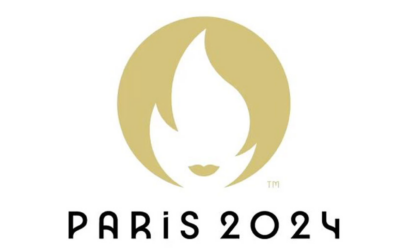In today’s world, safety and security are critical components of our daily lives, and we must take accountability for our own protection. Whether travelling, participating in public events, or simply going about our regular lives, being aware of potential risks and taking the required steps can help us stay safe. That’s why we are thrilled to have the opportunity to speak with Kim Marsh, owner of Marsh LLC, about how we can better safeguard ourselves and our communities.
Kim Marsh has dedicated her career to the safety and security industry, with over 40 years of experience in the field. She is the owner of Marsh, LLC, working in security consulting. In this role she works closely with clients, vendors, and integrators to provide comprehensive active threat programs and solutions.
- Describe your journey in the safety and security industry so far. When did you start?
- I started in the security industry in 1978, just a temporary teenager job before going to college. I started in a small, family-owned alarm company who did installations, and I was in the monitoring station. I’ve monitored alarms, dispatched on alarms, managed contracts and accounts receivables, managed accounts payables, engineered and sold systems, learned project management, parts ordering, I’ve pretty much done it all. Funny, I’ve installed alarm systems in horse barns and I’ve been asked to keep the wild bighorn sheep from crossing state lines out of Nevada to neighboring states. I’ve been able to work with customers in Poland, Scotland, Australia- all on the same telephone call to coordinate projects. With over 40 years in the electronic security industry, I became unemployed during COVID. I am very happy to be working in more of the physical security side of the industry, supporting tactically trained responders. I’m still learning the physical side of the business, but I am able to support my partners with insights on the electronic side and it is a win-win for all of us.
- I started in the security industry in 1978, just a temporary teenager job before going to college. I started in a small, family-owned alarm company who did installations, and I was in the monitoring station. I’ve monitored alarms, dispatched on alarms, managed contracts and accounts receivables, managed accounts payables, engineered and sold systems, learned project management, parts ordering, I’ve pretty much done it all. Funny, I’ve installed alarm systems in horse barns and I’ve been asked to keep the wild bighorn sheep from crossing state lines out of Nevada to neighboring states. I’ve been able to work with customers in Poland, Scotland, Australia- all on the same telephone call to coordinate projects. With over 40 years in the electronic security industry, I became unemployed during COVID. I am very happy to be working in more of the physical security side of the industry, supporting tactically trained responders. I’m still learning the physical side of the business, but I am able to support my partners with insights on the electronic side and it is a win-win for all of us.
- Can you give an example of a moment when you had to deal with a safety or security crisis and how did you mitigate it?
- Honestly, I’ve been very lucky and not had an issue that I’ve had to manage personally. I have an “engineer’s mind” and I look at situations after they have occurred to see what could have been done differently to change the outcome. I am not an expert at tactical response or physical security. I look at things a little differently than these individuals. I have been learning from many astute physical security individuals to understand where they lead from with their training and perspectives, and then I bring in my “every day people” thoughts to better hone our training programs and conversations. I want to make “security” a more comfortable concept to the general public so they will take part and take ownership of their own safety.
- Honestly, I’ve been very lucky and not had an issue that I’ve had to manage personally. I have an “engineer’s mind” and I look at situations after they have occurred to see what could have been done differently to change the outcome. I am not an expert at tactical response or physical security. I look at things a little differently than these individuals. I have been learning from many astute physical security individuals to understand where they lead from with their training and perspectives, and then I bring in my “every day people” thoughts to better hone our training programs and conversations. I want to make “security” a more comfortable concept to the general public so they will take part and take ownership of their own safety.
- Gun Violence is one of the major contemporary issues. What will be your approach to deal with it?
- I believe we need to start with Prevention. We need to be able to make a report of a security concern and know that report is going to be addressed, by the people who can make a difference, and have accountability. I work with a company who’s software takes a report and directs it to the entity or agency (Internal- HR, management, Legal, etc / External- social services, religious support, law enforcement, etc) so they can step in and interrupt the cycle before an incident occurs. It also includes a “track record” so no one in the “village” of interested parties is left without a complete picture of the person of concern- this allows for better decision making by the group. Look at the Marjory Stoneman Douglass shooting- so many interactions with mental health services and others, but no one knew of the other interactions. A different decision on how to manage the shooter would have been made if more people had a complete picture of him.
- Along with Prevention and reporting, I believe in changing the culture – every day people taking more responsibility for their own safety and security awareness. Yes, this may require education and coaching, but once the every day person recognizes what a threat is, they can take action by reporting the concern or mentoring to get all people on the safety and security bandwagon- creating Security Sentinels, which is a force multiplier for the security team.
- Of course, we will always need a trained response team- the personnel on-site are the real first responders in an active threat situation. Should those responders meet the training and certification requirements, instead of carrying a weapon on their person, they need a safe and secure way to store those weapons (either lethal or non-lethal). This is where Grav IT’s product, the A.S.R.S.- Active Shooter Response System comes to play. The self-defense tool is stored inside the high security, dual authentication (enrolled prox and fingerprint) vault. When accessed the vault sends out a notification to enrolled responders automatically. Any individuals accessing the vaults will have trained with law enforcement and be known to responders. It’s a Team Plan, based on NFPA3000, the Standard for an Active Shooter/Hostile Event Response, first released in 2018 by the NFPA with updates.
- Then it makes sense to bring in the other electronic technology- access control will be used “as designed” instead of having features turned off because they are a nuisance (or not bypassed with rocks to prop doors for convenience). Video systems can come into play with their latest technology instead of being used as forensic tools.
- Of course, this method needs to fit the safety and security culture of the facility where it is practiced. There must be buy-in from the very top through the ranks. If there is no commitment, then security becomes inconvenient, and the status quo does not change.
- What part does technology play in your safety and security plan?
- Technology comes after creating the safety and security culture. As mentioned above, if no one is going to follow the safety and security policy, then the technology becomes inconvenient with “false alarms” (that aren’t really false, are they?) and the technology stops being used for it’s full potential. When the safety and security culture includes explaining the “why” a door can’t be propped open, etc, and people follow the protocols, technology is an integral part of the plan.
- Technology comes after creating the safety and security culture. As mentioned above, if no one is going to follow the safety and security policy, then the technology becomes inconvenient with “false alarms” (that aren’t really false, are they?) and the technology stops being used for it’s full potential. When the safety and security culture includes explaining the “why” a door can’t be propped open, etc, and people follow the protocols, technology is an integral part of the plan.
- When you travel, what is on your checklist regarding your safety and security?
- When I travel, I want to feel comfortable in the surroundings of where I am going. As a woman, I try to make sure I know the routes and try to take into consideration the areas that route may take me and plan accordingly. I avoid wearing a lot of jewelry and secure my cash and credit cards. And I keep my purse zipped up and close to me. I don’t drink, and I am conscious to not accept drinks from a stranger. When going to my rental car, I always have my keys in hand instead of digging in my purse (I carry a carabiner clip with me to clip them inside my purse so I can locate them easily!), and I share my plans with my husband and/or co-workers, so someone knows where I am supposed to be and when. And I check in often.
- When I travel, I want to feel comfortable in the surroundings of where I am going. As a woman, I try to make sure I know the routes and try to take into consideration the areas that route may take me and plan accordingly. I avoid wearing a lot of jewelry and secure my cash and credit cards. And I keep my purse zipped up and close to me. I don’t drink, and I am conscious to not accept drinks from a stranger. When going to my rental car, I always have my keys in hand instead of digging in my purse (I carry a carabiner clip with me to clip them inside my purse so I can locate them easily!), and I share my plans with my husband and/or co-workers, so someone knows where I am supposed to be and when. And I check in often.
- I believe that we are living in the times of Information Overload. How do you keep up with the most recent information?
- That’s a great question and you are correct, so much information! I do my best to keep up, but I also know I have to step away from technology and news overload. I try to shut down on weekends, to include limiting social media. I am selective about the sources where I get my updates and tech news, seeking data from my trusted resources and avoiding hype and bluster from unreliable sources. I know I have to do my research before I share products and services with my network. It’s not just my reputation, but my company’s!
- That’s a great question and you are correct, so much information! I do my best to keep up, but I also know I have to step away from technology and news overload. I try to shut down on weekends, to include limiting social media. I am selective about the sources where I get my updates and tech news, seeking data from my trusted resources and avoiding hype and bluster from unreliable sources. I know I have to do my research before I share products and services with my network. It’s not just my reputation, but my company’s!
- What are your thoughts on the role of organizations/workplaces to maintain their duty of care obligations towards their employees?
- Duty of Care needs to be taken into consideration at every facility, public and private. As you know, it is the responsibility of organizations (and people) to take all “reasonable measures necessary to prevent activities that could result in harm to other individuals and/or their property.” We recently saw an initial lawsuit of $27B filed by the survivors of the Uvalde shooting against the school district, law enforcement, and others. I believe organizations and workplaces need to perk up their ears on this and take a closer look at their safety and security plans- I am not sure how long insurance companies are going to accept a half-hearted security plan that is written and put on a shelf, never to be looked at again. Security managers will need to show training (not just showing the original FBI video Run, Hide, Fight) teaching employees a safety and security culture.
- Duty of Care needs to be taken into consideration at every facility, public and private. As you know, it is the responsibility of organizations (and people) to take all “reasonable measures necessary to prevent activities that could result in harm to other individuals and/or their property.” We recently saw an initial lawsuit of $27B filed by the survivors of the Uvalde shooting against the school district, law enforcement, and others. I believe organizations and workplaces need to perk up their ears on this and take a closer look at their safety and security plans- I am not sure how long insurance companies are going to accept a half-hearted security plan that is written and put on a shelf, never to be looked at again. Security managers will need to show training (not just showing the original FBI video Run, Hide, Fight) teaching employees a safety and security culture.
- I have come across #NeverLetItHappenHere in your social media posts. Can you elaborate?
- #NeverLetItHappenHere is my rallying cry– I believe that you, me, and all of the everyday people need to take the initiative and take responsibility to be aware of our surroundings, aware of other people, and willing to report a concern. Every interview after a shooter incident you hear someone saying, “I never thought it would happen here.” Every one of the shooting events has had some sort of “red flag” pre-incident indicator before the event occurred. If we take ownership of our safety and security, report our concerns, have confidence that action will be taken when we do report, then we can change the narrative. And we need to train according to our capabilities. Not everyone is going to be tactically trained and able to take another person’s life. But we can and should all have “strategic” training- know how to hide (not under a desk!), knowing how to run (and where!), know how to fight. And all important, take a CPR class, know how to use an AED (and where they are located!), and learn Stop the Bleed. These skills not only help you at your workplace, but in your off-duty life. I believe these skills Save Lives and Make A Difference.
- #NeverLetItHappenHere is my rallying cry– I believe that you, me, and all of the everyday people need to take the initiative and take responsibility to be aware of our surroundings, aware of other people, and willing to report a concern. Every interview after a shooter incident you hear someone saying, “I never thought it would happen here.” Every one of the shooting events has had some sort of “red flag” pre-incident indicator before the event occurred. If we take ownership of our safety and security, report our concerns, have confidence that action will be taken when we do report, then we can change the narrative. And we need to train according to our capabilities. Not everyone is going to be tactically trained and able to take another person’s life. But we can and should all have “strategic” training- know how to hide (not under a desk!), knowing how to run (and where!), know how to fight. And all important, take a CPR class, know how to use an AED (and where they are located!), and learn Stop the Bleed. These skills not only help you at your workplace, but in your off-duty life. I believe these skills Save Lives and Make A Difference.
Kim, It has been a fascinating session. Thank you for connecting.
Kim is honored to be included in the Active Shooter Prevention Program (ASPP), creating the Gold Standard of threat programs for our client’s safety and security plans.
Kim is passionate about saving lives and is committed to providing education, collaboration, and referral to help institutions prepare for and respond to critical incidents. Her extensive background in electronic security and her dedication to her clients makes her a trusted partner in the industry.



